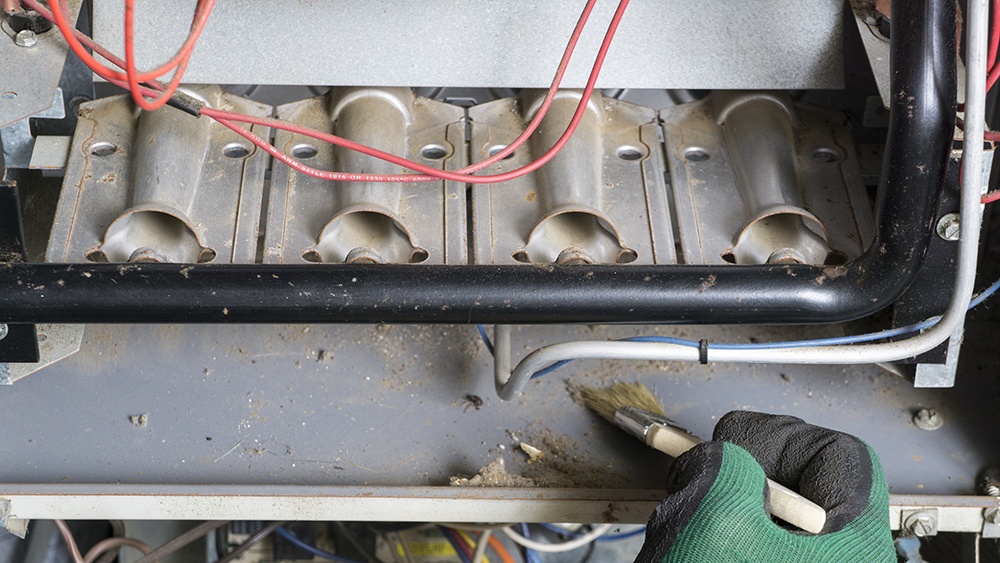
Most homeowners can agree on at least two things about furnaces: 1) they’re usually in the basement, behind a creepy door you never open and 2) sometimes they make weird noises, and chalking it up to being haunted is the easiest solution.
However, furnaces are so much more than a hunky piece of steel. They use steam, hot water, air, electricity or natural gas to provide the area with high-quality heat. There are also different types of furnaces, including industrial process furnaces and metallurgical furnaces, but we’ll stick to household furnaces that most people are familiar with.
To help you brush up on the types of furnaces, categories of functionality and furnace parts, here is Warner Service’s breakdown for beginners:
Types of Household Furnaces (Based on Design):
- Single-stage: This furnace is either on or off. There are no other stages of operation because it’s always running at the highest speed, pumping out the hottest air and using the highest velocity.
- Two-stage: This furnace has two stages of operation, full and reduced speed. This moves the air using a lower velocity.
- Modulating: This furnace continuously modulates how hot the air is and the velocity, depending on the demanded heat and outside temperature.
Categories of Household Furnaces (Based on Efficiency and Functionality):
- Natural draft: This method allows warm air to rise through pipes constructed of wood or metal. The pipes channel the warm air into floor or wall vents throughout your home. Natural draft furnaces can work on almost any fuel type, have few controls and do not come with a blower.
- Forced-air: This method moves warm air using blowers. This furnace was later designed to also accommodate air conditioning systems, but forced-air furnaces have poor energy efficiency overall.
- Forced draft: This method uses combustion air blowers that pull air through a heat exchanger, which increases energy efficiency. It can also accommodate air conditioning systems.
- Condensing: This method uses PVC pipes and a high-efficiency heat exchanger to take in cold air, run it through an air filter using a circulating blower and redistribute warm air throughout your home.
Basic Anatomy of an Indoor Furnace:
- Air filter: Used to filter to incoming air, catching debris, dust, hair and other airborne pathogens
- Cold air return: The location where circulated air from your home comes back into the furnace to be re-heated and then is vented back into your house
- Compartment blower: Circulates air throughout your home
- Electric blower motor: Used to power the blower/fan
- Flue: A plastic or metal vent that discharges potentially dangerous by-products of your furnace, including carbon monoxide molecules, outside your home
- Gas burner: The heat source of the furnace
- Gas valve: Allows the burner flame to be on a high and low setting, shuts off the furnace’s gas flow if the pilot light goes out
- Heat exchanger: Re-heats the filtered air
- Heat recovery ventilator (optional): Transfers humidity between indoor and outdoor air streams to maintain balance, recovers about 85 percent of heat loss
- Pilot light: A small gas flame that is used to light a larger burner that heats the circulated air through the furnace
Disclaimer: Due to the high-efficiency nature of condensing furnaces, they may come with extra parts that weren’t mentioned above. Click here for the detailed anatomy of a condensing furnace.
Furnaces are still bulky, loud appliances that live in your basement behind closed doors, but hopefully you understand a bit more about how they work, what types are offered and what’s inside. If you need more information or would like to schedule a maintenance check-up for any of your home’s appliances, contact Warner Service today.


